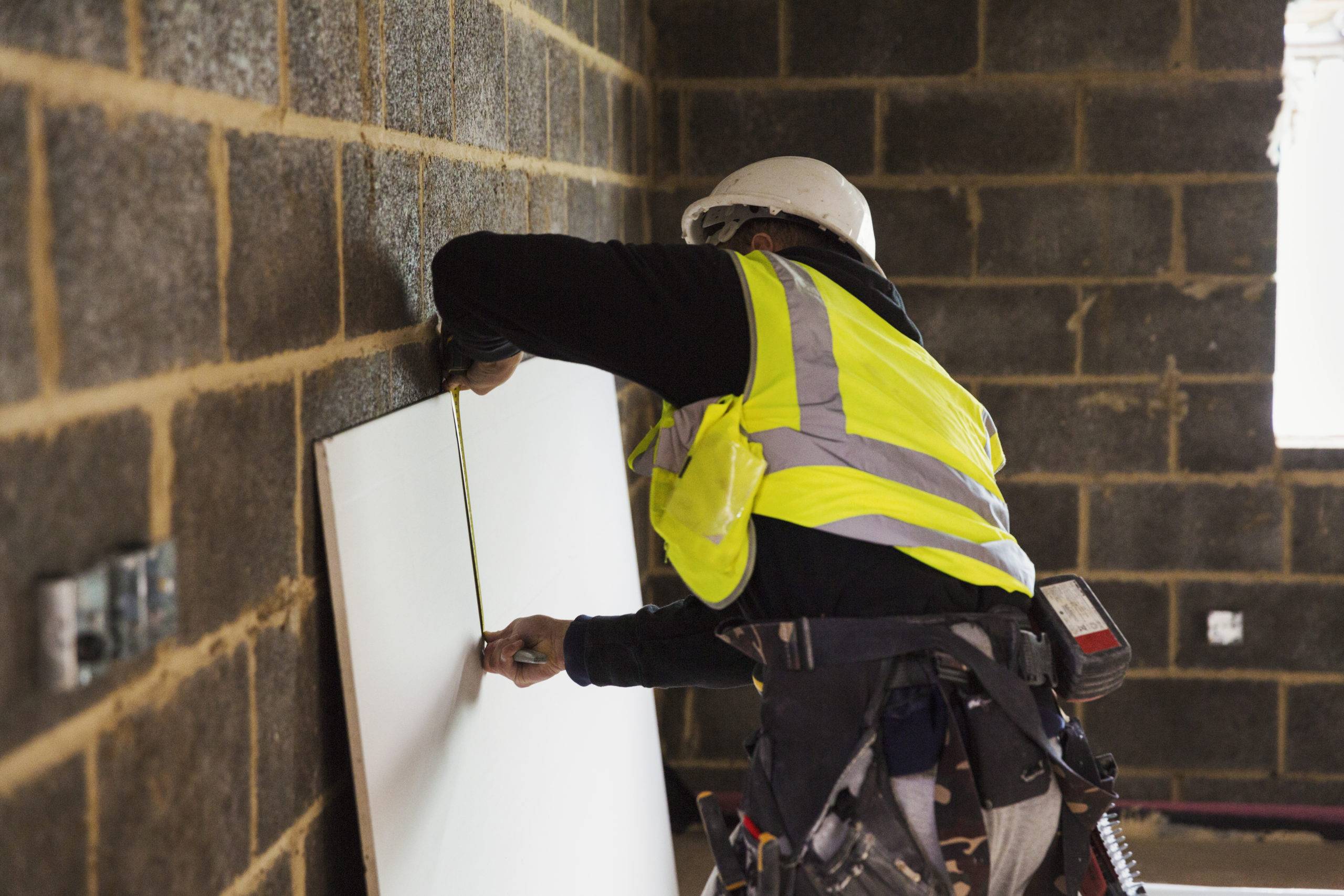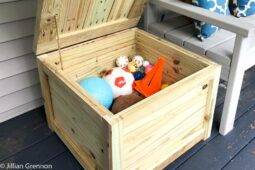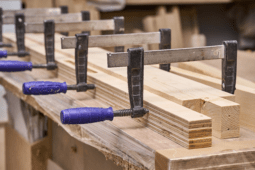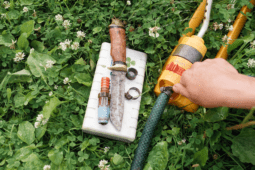How To Wear A Tool Belt
Wearing a tool belt is vastly different than sliding a belt through the loops in a pair of jeans or dress pants. Tool belts are utilitarian, and in practice are a tool in themselves. How you wear one can greatly affect your efficiency on the job site.
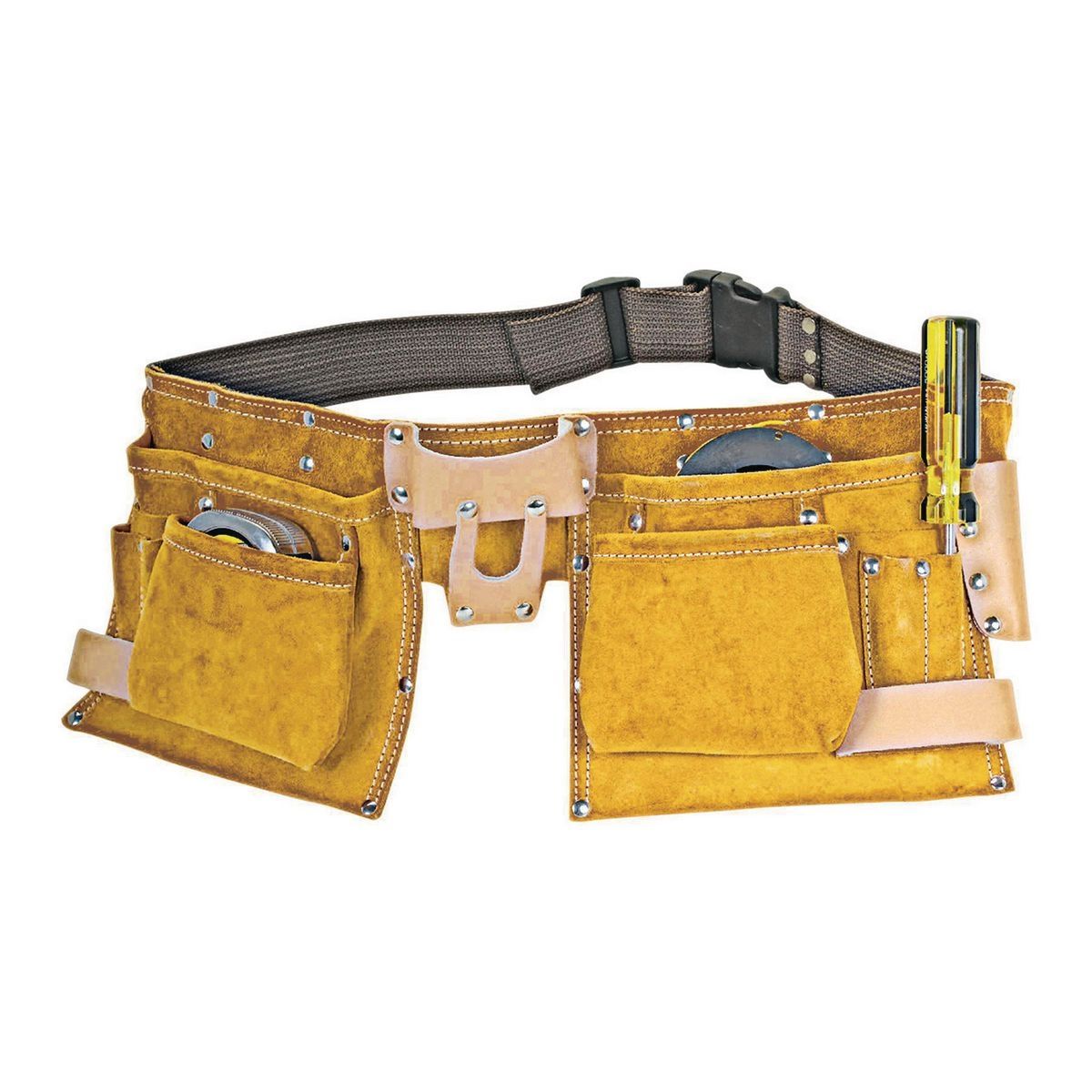
The general rule for a tool belt is to have it hang from your hips, below the traditional belt line with just enough slack to move freely, but with just enough tension to keep the belt in place as you move across a job site, use a latter or crawl along the top of a wall. It sounds demanding, but it really isn’t if you wear one correctly.
Individual body types determine how to wear a tool belt as much as the design of the belt itself. If you’re a skinny person, with possibly boney hips, your style of tool belt will be different than someone with a muscular physique or someone sporting a little belly above their regular belt line.
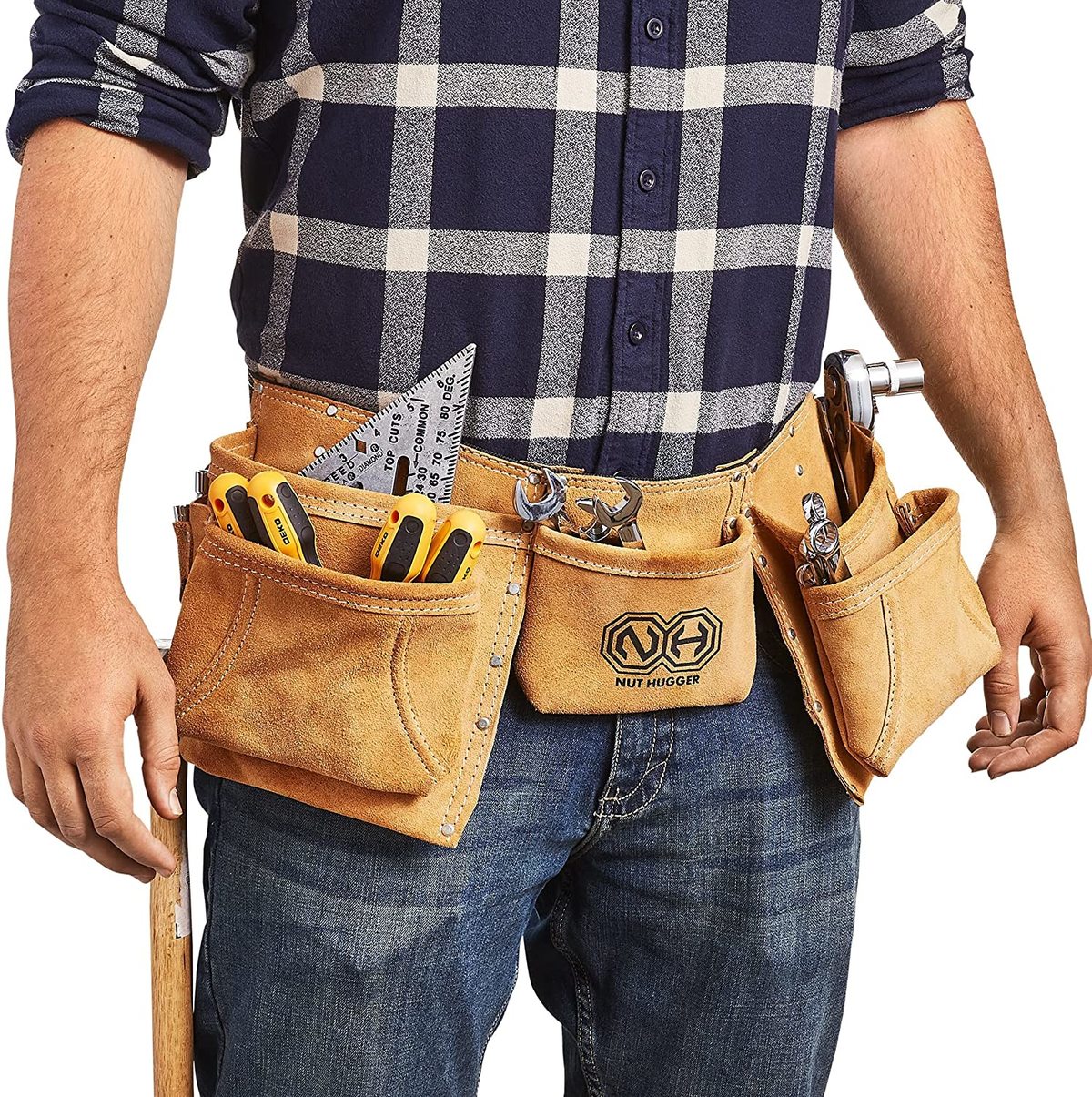
The general rule is to adjust the belt so you can put your left and right hand on your hips with the belt in place. When you remove your hands the belt should sag enough to drop into place properly. With that being said, there is no hard and fast rule that makes this work for everyone.
Most tool belts have a slot in the front for a tape measure to sit. The tape pulls the belt down. To counteract this front weight, a hammer loop on both sides of the tool belt provides balance when a 16-, 18-, or 22-ounce hammer is slung into it.
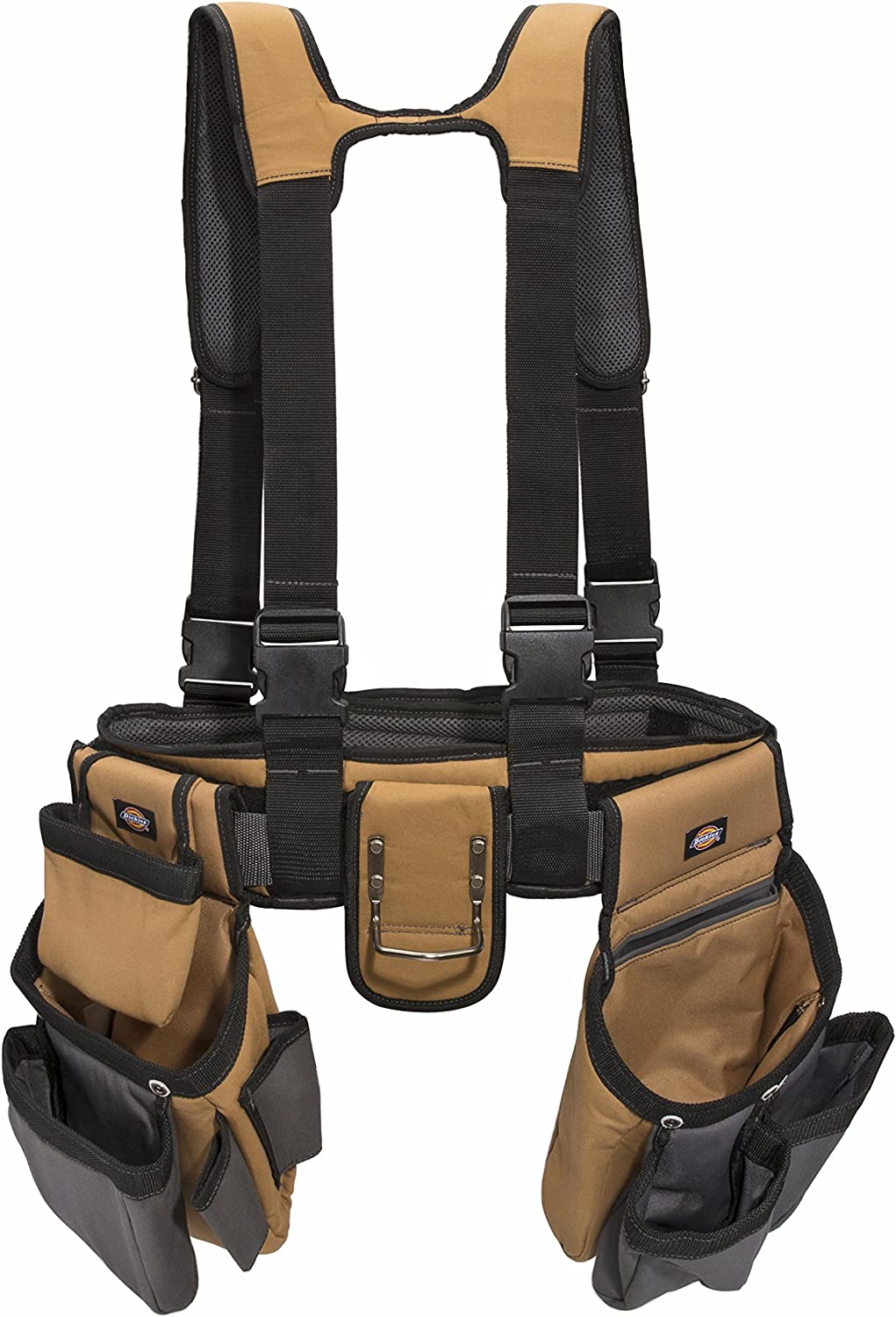
On the opposite side of the hammer, you should carry chisels, a razor-style utility knife, and a triangle or t-square to counteract the weight of the hammer left to right.
When these tools are all configured, you can put nails, screws, bolts, or other hardware into the large storage pockets in the front on either side of the tape.
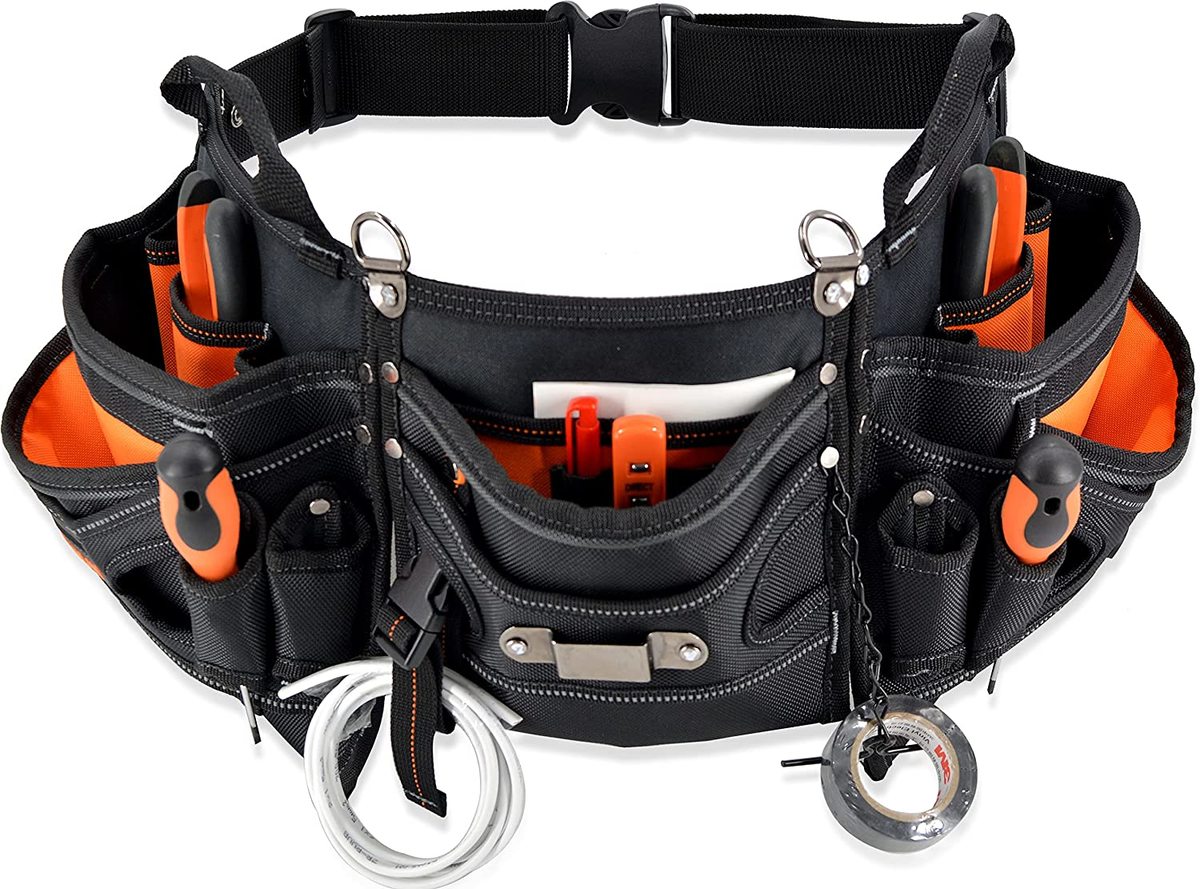
Once this is all done, you have a tool belt that can weigh 10 to 15 pounds. On some people, that’s just too much weight to carry on your hips alone. That’s why they make carpenter’s suspenders! A carpenter-style suspender is an “X” pattern, with a wide elastic that connects with the front and back of the tool belt over the users’ shoulders. This alleviates the strain on the hips and distributes the weight evenly across the body.
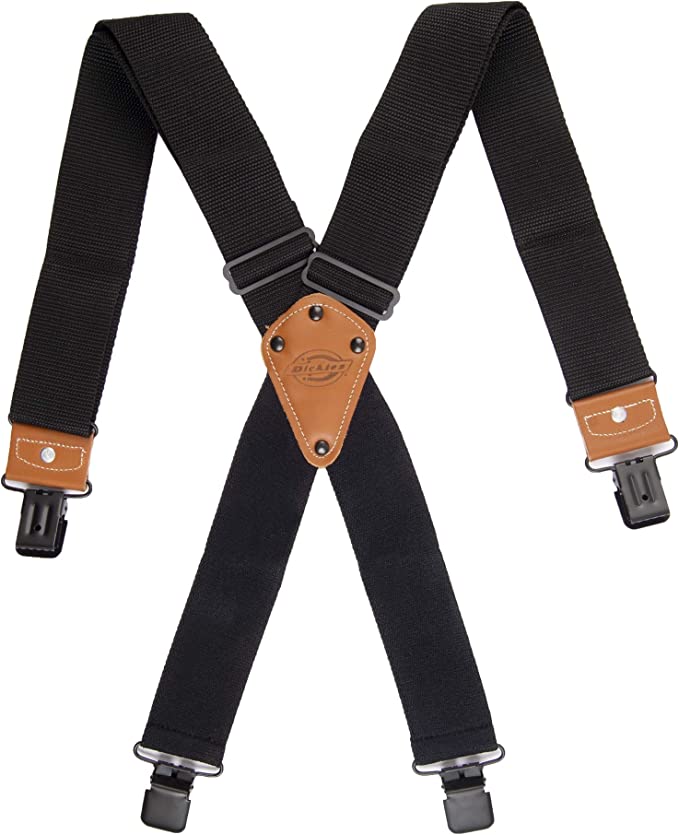
Other job-specific tool belts such as those worn by iron workers can include an attached spool for carrying tie wire, wire cutting pliers, and splicers. An electrician’s tool belt will have a variety of screwdrivers, strippers, connectors, and tie-down clamps, but the premise is the same for every style of tool belt. Balance and weight distribution are what it’s about.
When you’ve found the right balance, you can either pull on your belt and hook the loop behind your back or spin the belt around, hook the loop in front and spin your belt back in place.
